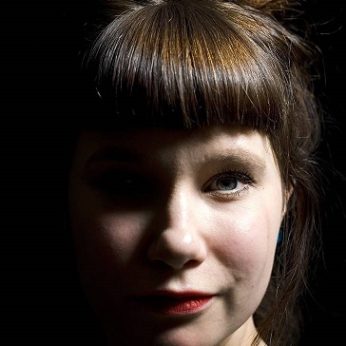Composer: Antonin Dvořák (b. 1841 - d. 1904)
Performance date: 03/07/2016
Venue: Bantry Library
Composition Year: 1889
Duration: 00:35:01
Recording Engineer: Richard McCullough, RTÉ lyric fm
Instrumentation: vn, va, vc, pf
Instrumentation Category:Piano Quartet/Piano Quintet
Artists:
Elina Vähäla -
[violin]
Lilli Maijala -
[viola]
Monika Leskovar -
[cello]
Julius Drake -
[piano]

As I expected, it came
easily and the melodies just surged upon me. Thank God!
Dvorák’s
publisher had been pleading for a second quartet for several years by the time
he found the time to set it down. With an initial sketch begun in 1887 it took
little more than five weeks for the composer, now at the height of his career,
to finish it. It came at a turning point in Romanticism – Berlioz, Chopin and
Wagner were all dead and Brahms had privately decided to discontinue composing.
A new generation of composers were now looking beyond tradition and borders,
seeking to expand the harmonic language and find new musical forms both by
developing traditional structures and by exploring and incorporating folk and
‘exotic’ music. In this work a winning combination of traditional large-form
structure and the contemporary vogue for folk flavour, in the form of his
native Czech music, are integrated expertly by a master craftsman.
The
opening six bars of the first movement contain its kernel. A solemn, angular
motto introduced in unison strings. By way of answer, the piano, mocking the
seriousness of the opening, enters a beat early, destabilising the harmony, and
continues to stamp out the strings hopeful attempts to continue. The piano has
its way harmonically and the quartet develop the motif towards a lilting second
melody on Dvo?ák’s beloved viola, its prettiness destined for a short life
since he opts only to develop the main motto and a transitional, dotted theme.
The movement’s delicious tension between seriousness and playfulness is
heightened by a shortened recapitulation which grows out of a reappearance of
the second theme.
The lento second movement in G flat major
immediately dispels the playful verve of the first with a long, sweet melody on
the cello. The movement takes an intriguing simplicity of form, containing as
it does five melodies, which are stated one after the other before returning in
the same order, with little substantial variation or development save for a
change of instrumentation and some transposition. A coda is provided simply by
extending the fifth theme. Eschewing the strictures of classical form this is a
movement that celebrates the surging melodies which came so naturally to the
composer.
The
enchanting third movement, a gentle scherzo, is rich with folk flavour. The
accompaniment for the first theme, a waltz which we hear four times, is based
on characteristic techniques of the cimbalom, a folk dulcimer. The second
theme, introduced by the piano, is modal and Eastern European sounding, a cello
drone reminiscent of the Czech bagpipe. A teasing, asymmetric trio tune
follows, comically suffering a heavy and wild exaggeration in the repeat. The
somewhat histrionic tone is carried through to a link of shimmering scales
which lead back to the opening, the waltz and folk tune explored further before
a gentle coda based on the waltz theme, two unexpected final chords echoing the
bluster of the trio.
The
finale is brimful of new music – stretto
style writing with dovetailed ideas and pacy, keen accompaniment result in a
breathless race-to-the-finish feel. It is mostly in the unusual choice of E
flat minor but the sweet second subject, usually in the viola, ensures we land
back safely (if a little shaken) in the home key before reaching the finish
line.
Copyright © 2024 West Cork Music. All rights reserved.
Designed and developed by Matrix Internet